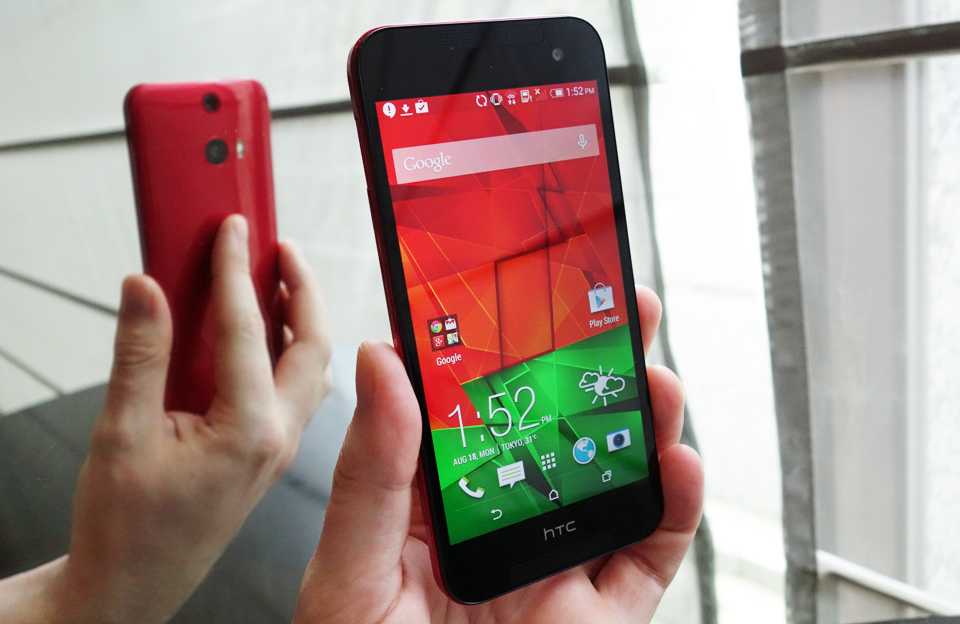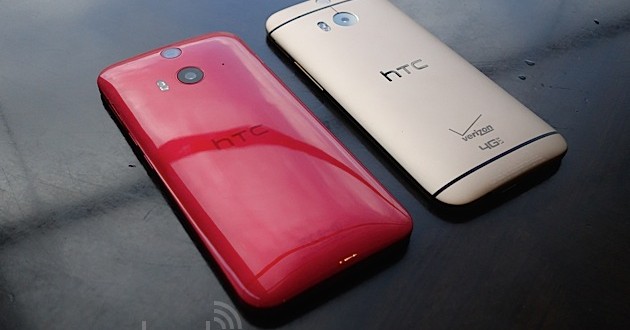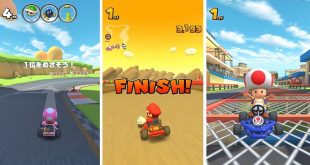HTC has been putting out flagships at high speed lately, but what we tend to omit is that the brand also has high-spec Android exclusive devices as well in Japan, which are rarely released globally. One of these devices that had been picked up by Verizon was the Droid DNA, and that’s about it. HTC does release a lot of different devices exclusive to Japan under the Butterfly name and doesn’t let them go abroad, sadly. But we hope this will not be the case for the latest Japanese flagship, the HTC Butterfly 2, the globetrotting version of the HTC J .
Hands-on reviewers say that the Butterfly 2 might turn out to be better than the One M8, even, having similarities to the flagship but overcomes it in a few aspects. The Butterfly 2 is similar to the One M8 in its Full HD, Super LCD 5 inch screen, Snapdragon 801 CPU, Sense 6 UI and Boom sound speakers on the front. These specs already make the device desirable in other markets than the Japanese one, to be fair. But the device surpasses the One M8 in a few ways, which makes the flagship deserving of all the positive reviews.
First off, the camera on the Butterfly 2 sports 13 MP with a secondary depth sensor and a 5 MP wide-angled front camera. The rear camera is lo longer an Ultra-pixel one, even though it sports more MPs. That would mean that the device’s low-light shooting performance might be weakened a bit, but it still remains a duo camera. The depth sensor has been improved with better autofocus speeds as well.

The device’s most attractive new spec is the fact that it is IP57 certified, which means it can survive taking pictures under water in up to 1 meter depths for 30 minutes or so. The slots for SIMs and SDs are now easier to handle, being converted to pull-out trays instead of trays opened with pins. Another plus for the Japanese flagship is its larger 2700 mAH, giving you a bit more time with your device.
There are two shortcomings of the device, which are not actually or necessarily shortcomings, rather inconveniences that will be resolved in case the Butterfly 2 somehow ends up on international markets. First off, the chassis is plastic, but it looks pretty good and is supposedly more resistant to scratches and stains thanks to a stain treatment HTC has advertised. The other inconvenience is that the device would not be LTE compatible for 4G speeds in the U.S., being specifically designed for Japanese carriers packing FDD and TDD bands.
We don’t know what the future holds in terms of this device being available to customers out of Asia, but we certainly hope to see it emerge on international markets, because it does sound like an excellent smartphone to have. It remains to be seen.
 Load the Game Video Games, Reviews, Game News, Game Reviews & Game Video Trailers
Load the Game Video Games, Reviews, Game News, Game Reviews & Game Video Trailers



